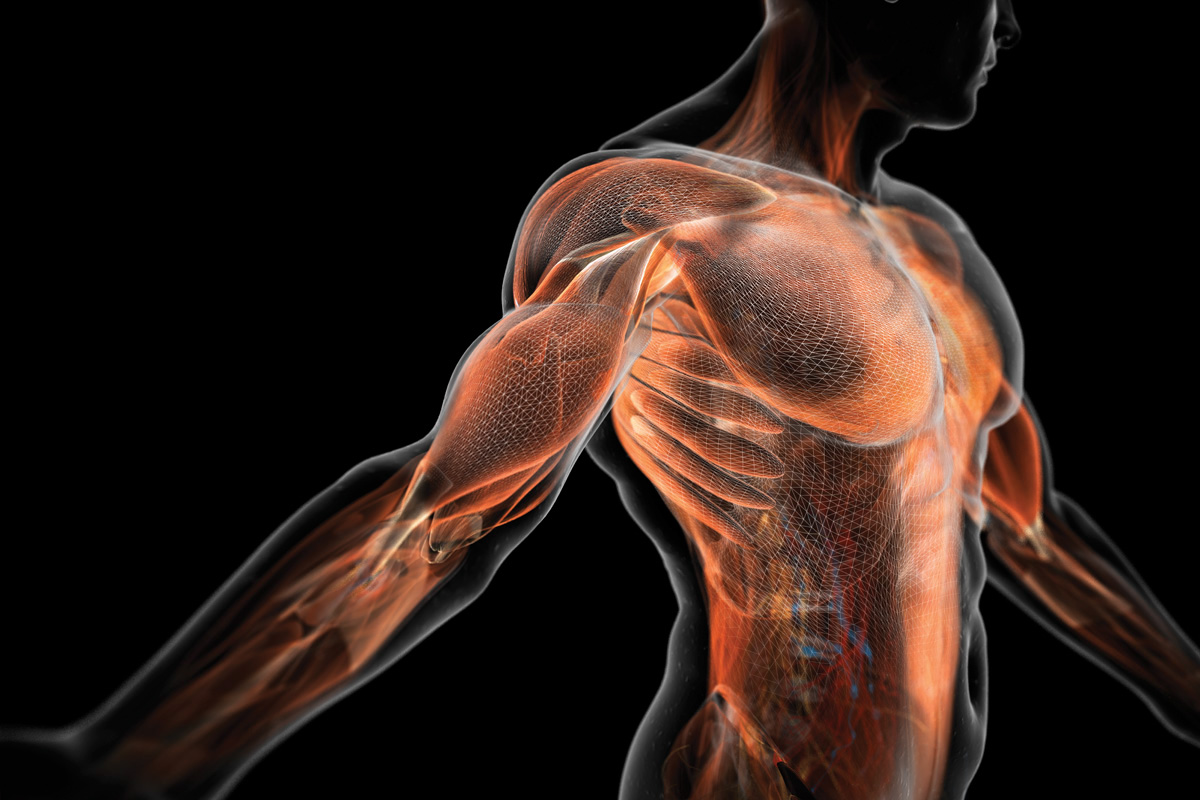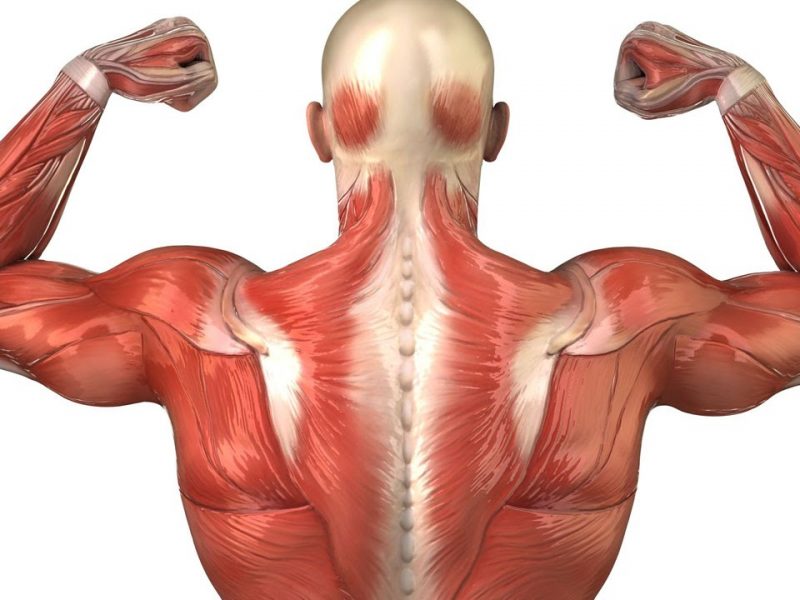If you want to change something in your body, it always makes sense to be able to calculate your calorie requirement. It doesn’t matter whether you want to lose weight slowly or quickly, gain weight and build muscle mass , or keep your weight specifically.
In this article you will find the most important information that you really need if you want to determine your calorie requirement. In addition to a few backgrounds to better understand your calorie requirement, I would like to introduce you to the best calorie requirement formulas with advantages and disadvantages. From this you can then choose the right one for you.
I also want to give you some tips on how you should interpret the respective results and deal with them. I always try to limit myself to the things that really help you to better understand your calorie requirements and to make the knowledge usable.
If you are not interested in doing your own calculation and just want a good result for your calorie requirement quickly and easily, you can use my calorie calculator to determine a fairly good approximation. Alternatively, you can of course also get a fitness tracker or a sports watch with a heart rate monitor and a corresponding function (e.g. the Garmin vivoactive *).
What your calorie requirement is and what it is made up of
The amount of energy your body needs to face your daily tasks is measured in calories or kilocalories (kcal for short). A kilocalorie is exactly the energy that is required to heat one kilo of water by one degree Celsius.
Your calorie requirement is made up of various components, all of which you can influence (to different degrees) through your lifestyle. I have shown you the three most important components schematically below. In the following graphic you can see what your calorie requirement is made up of.
Through activity in everyday life and sports calorie consumption increases.
I believe that it is helpful to know and understand  these essential components so that you can understand how you can influence your calorie consumption.
these essential components so that you can understand how you can influence your calorie consumption.
Your basal metabolic rate
Your basal metabolic rate is the amount of energy that your body uses when you are doing practically nothing. You also have this energy requirement if you just lie on the sofa all day. The basal metabolic rate can be calculated relatively precisely and only slightly influenced without complicated measurements.
Your basal metabolic rate increases when you gain weight. In particular, an increase in muscle mass also leads to an increase in your basal metabolic rate. More muscles also use more energy outside of training. An effective muscle building training has a double effect.
Your movement in everyday life
Movement in everyday life is greatly underestimated by many people in terms of their contribution to calorie needs. In fact, the easiest way to increase your overall consumption is through more exercise in everyday life . No wonder, after all, you train a few hours a week while you spend an average of 16 hours a day in your professional and private everyday life.
Your calorie consumption during training
You should neither overestimate nor underestimate your calorie requirement during training. Runners in particular tend to overestimate their energy consumption while jogging. You can read more about this in my article about the goal of Lose weight by jogging . If you deal with it a bit, however, you can realistically calculate your calorie requirement and also take your training into account.
Apart from the fact that losing weight without exercise makes little sense anyway, you shouldn’t do without training in view of the many advantages of physical activity . Especially when you do strength training, this ultimately has a medium-term effect on your basal metabolic rate through additional muscle mass.
Why you should calculate your calorie needs
Personally, I’m not a huge fan of counting calories all the time. However, anyone who thinks that calories do not play a role is greatly mistaken. If you want to lose weight, build muscle or maintain your weight, then you should know the right amount of calories to put in your body.
You can learn to eat intuitively. To do this, however, you can at least make yourself roughly aware of which foods contain which nutrients and how much of them you need. If at some point your weight no longer behaves according to your wishes, you can sharpen this awareness again.

It makes sense to calculate your calorie requirement really not rocket science.
Of course, it’s not just about how many calories you eat. The quality of your food also plays an absolutely essential role if you want to gain or lose weight effectively and healthily. In addition to the right amount of calories, you should also have enough protein, healthy fats (especially Omega 3 fatty acids ), carbohydrates for fuel and enough fruits and vegetables to get your micronutrients.
How you can determine your calorie requirement
As explained before, your calorie consumption is made up of various components that you can (approximately) determine. There are various options available to you for this.
You can get yourself a fitness tracker or a sports watch with a corresponding function. This determines your calorie requirement based on some information about yourself (age, weight, etc.), which you can enter in an app, as well as your exercise profile. It is important that such a watch has a good heart rate monitor and that you wear it all day. This is the only way you can really get a realistic result.
Personally, I find the Garmin vivoactive * very good, suitable for everyday use and cheap. It also looks quite similar to my (much more expensive) Garmin Fenix *.
You can have your calorie consumption measured even more precisely in a special laboratory. However, that shouldn’t be an option for most normal people. In my opinion, this only makes sense in competitive sports.
You can calculate your calorie needs. That’s what this article is about in the first place. There are various formulas for this, which I would like to introduce to you here. These start at different points and can or should also be combined if necessary.
Calculate the total calorie requirement with a simple rule of thumb
Do you really have no desire to calculate or measure anything and still want to at least roughly determine your calorie requirement? Then the following rule of thumb is at least suitable as a first, very rough indicator. This rule of thumb is as follows:
- Men consume around 34 kcal per kilogram of body weight every day
- Women consume around 31 kcal per kilogram of body weight every day
For people of average height with an average active (or inactive) Western European lifestyle, these values are usually not that unrealistic. Please note, however, that you can be really wrong with this.
Your results will be much more precise if you determine your basal metabolic rate and your performance metabolism and combine these results.
Calculate the basal metabolic rate
As previously explained, your basal metabolic rate is the most stable part of your total calorie consumption. If you want to calculate your calorie needs, this is the first step. There are various formulas for calculating your basal metabolic rate, which I would like to briefly introduce to you below.
Calculate the basal metabolic rate with the Harris Benedict formula
It’s hard to believe, but the most common formula for calculating the basal metabolic rate is actually over 100 years old. It still delivers relatively reliable values, even if it is not entirely undisputed. Using the Harris Benedict formula, you can calculate your basal metabolic rate as follows:
As a man, you use the following formula:
Basal metabolic rate in kcal = 66.5 + 13.7 x body weight in kilograms + 5 x body height in centimeters – 6.8 x Age in years
As a woman you use the following formula:
Basal metabolic rate in kcal = 655 + 9.6 x body weight in kilograms + 1.8 x body height in centimeters – 4.7 x Age in years
With little effort you have a relatively good idea of how high the basal metabolic rate is in your calorie consumption.
Is there another basal metabolic rate formula?
There used to be different formulas for calculating the basal metabolic rate. However, due to the simplicity and the relatively good results of the Harris Benedict formula, it has caught on. The formula is absolutely sufficient for a first indication.
Only the formula of the American Society for Clinical Nutrition (from Mifflin-St.Jeor) is (especially in the medical Area in the USA) is still relatively common. The formula is intended to more realistically show the differences in calorie requirements between men and women. The formula is also much more up-to-date (around 1990). According to this formula, the basal metabolic rate is calculated as follows:
Basal metabolic rate in kcal = 10 x body weight in kilograms + 6.25 x height in centimeters – 5 x age in years + gender factor [+5 for men and -161 for women]
Especially for women, this formula should deliver up to 5% more accurate results.
Remember that you only calculate your basal metabolic rate with these formulas. To get your total sales, you have to add them.
Calculate service revenue
Now that you know your basal metabolic rate, you should add your performance metabolic rate to it. That is the energy requirement for the activities beyond your basal metabolic rate, i.e. essentially your movement in everyday life and your sporting activities.
The PAL factor as an indicator for your performance turnover
In nutritional science, the so-called PAL factor has established itself as an indicator for energy consumption depending on the personal level of activity. PAL stands for physical activity level and is derived from the type of activity a person does. The following values are common here:
| Activity | PAL factor |
| sleep | 0.95 |
| only sitting or lying down | 1,2 |
| almost exclusively sitting, few leisure activities | 1.45 |
| predominantly sitting, with additional standing / walking activities | 1.65 |
| predominantly standing / walking activity | 1,85 |
| physically demanding professional activity | 2,2 |
Just take the respective PAL factor and multiply it by the number of hours that you spend on the respective activity. For example, if you do very strenuous physical work eight hours a day, the rest of the day just sitting on the sofa watching Netflix and sleeping eight hours, then you would use the PAL factor to calculate your total calorie requirement:
Total metabolic rate = [basal metabolic rate x 0.95 x 8 + basal metabolic rate x 1.2 x 8 + basal metabolic rate x 2.2 x 8] / 24
For the sake of simplicity, 0.95 x 8 and 16 x the (professional) activity level are usually calculated.
Energy consumption during sporting activities
In addition to everyday movement, the last component is your sporting activity. Calculating the respective calorie requirement here is a little more time-consuming, because the energy consumption can vary greatly depending on the type of sport and intensity.
A simple approach would be to simply use the next higher PAL factor for the calculation if you are a physically active person.
Alternatively, you can of course also find the right energy consumption values for your sporting activities and count them on the activity hours. Below I have put together a few values that I am familiar with. I have little experience with other sports. You can certainly find values for this on the Internet.
| sporting activity | approx. kcal / h / kg |
| Slow jogging (7- 9 km / h) | 8 |
| Brisk jogging (10-12 km / h) | 10 |
| Medium-speed running (13-15 km / h) | 12 |
| Fast running (16-18 km / h) | 14 |
| Leisurely cycling (15-25 km / h) | 8 |
| Brisk cycling (25-30 km / h) | 10 |
| Fast cycling (30-35 km / h) | 12 |
| weight training / bodybuilding | 8 |
When using these values, please note that this applies to approximately the entire energy consumption and not the additional Calorie consumption.
How accurate are the results and how do you deal with them?
Depending on which type of calorie requirement calculation you have ultimately decided on, the values determined are also differently accurate.
However, none of the values that you have calculated without a measurement are really exact. Your result always represents an orientation from which you can start. Every one to two weeks you should check whether your weight has developed as planned. If this is not the case, you can increase or reduce your calorie intake accordingly.

Start with the calculated calorie requirement and regularly readjust
Your conclusion on the calorie requirement
Now you can determine your calorie requirement and even know different ways to do it yourself. I am sure that there was also the right variant for you. It is up to you whether you simply use an activity tracker like the Garmin vivoactive *, consult my calorie calculator or decide to calculate your calorie needs yourself.
Above all, it is important that you only ever use the results as a guide and as a starting point for nutrition. You will only have the best possible results if you regularly check whether the desired development is occurring and readjust it if necessary. Make sure to also consider what is really useful for your goal.
I have seen too often that major mistakes are made by people who wanted to build muscle, but who estimated the muscle building duration completely incorrectly or who did not follow the guidelines of their bulk phase diet have held. The same goes for people who want to lose weight and define their muscles .
In addition to the amount of calories consumed, the type of nutrients and the right training also play an important role. Calorie intake is an essential, but not the only building block if you want to change your body. So make yourself smart about what you should (still) pay attention to.
I hope you enjoyed this article and that you will visit my blog again soon. It’s best to follow me directly on Facebook or on Instagram and sign up for the newsletter so that you don’t miss any new articles.



